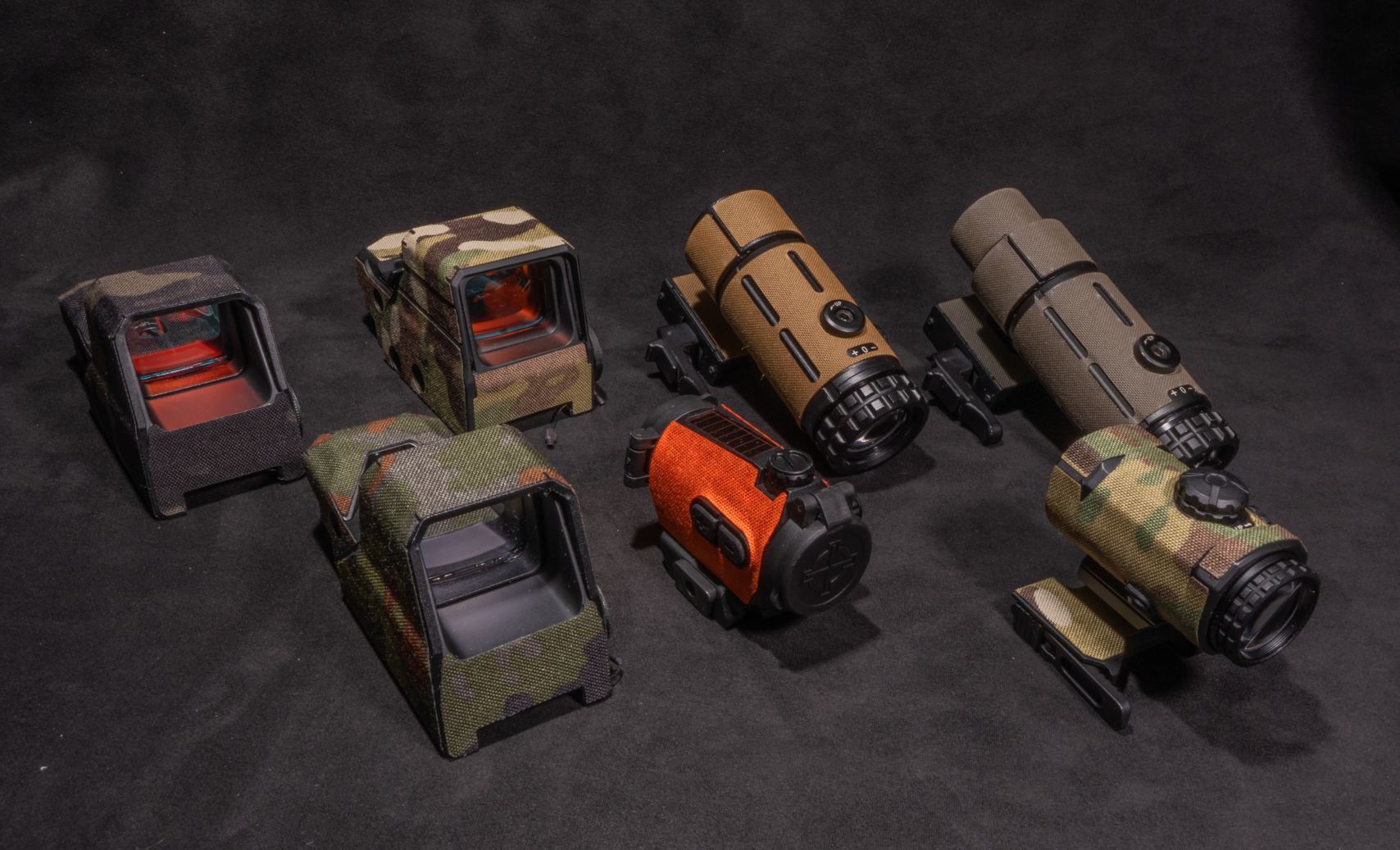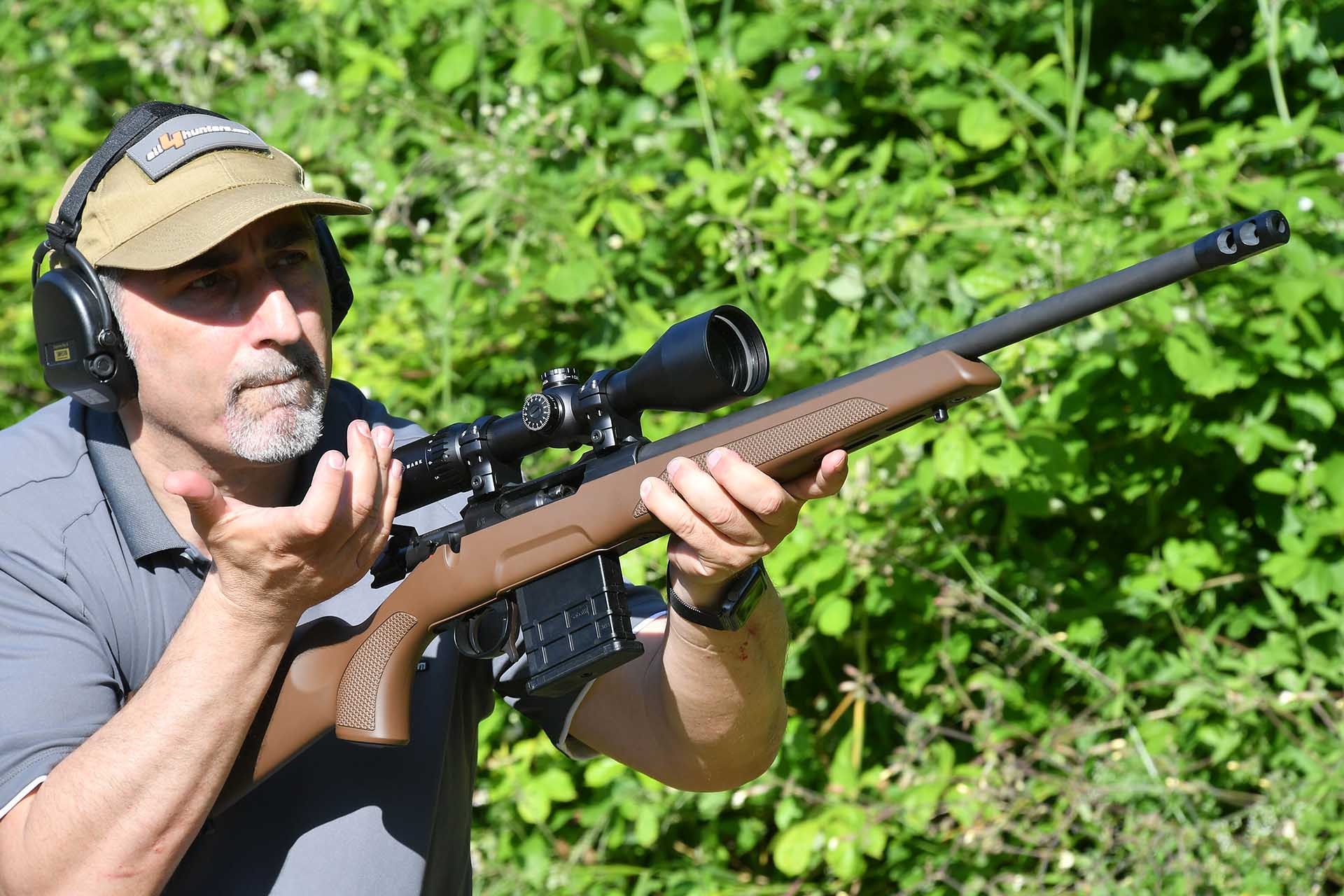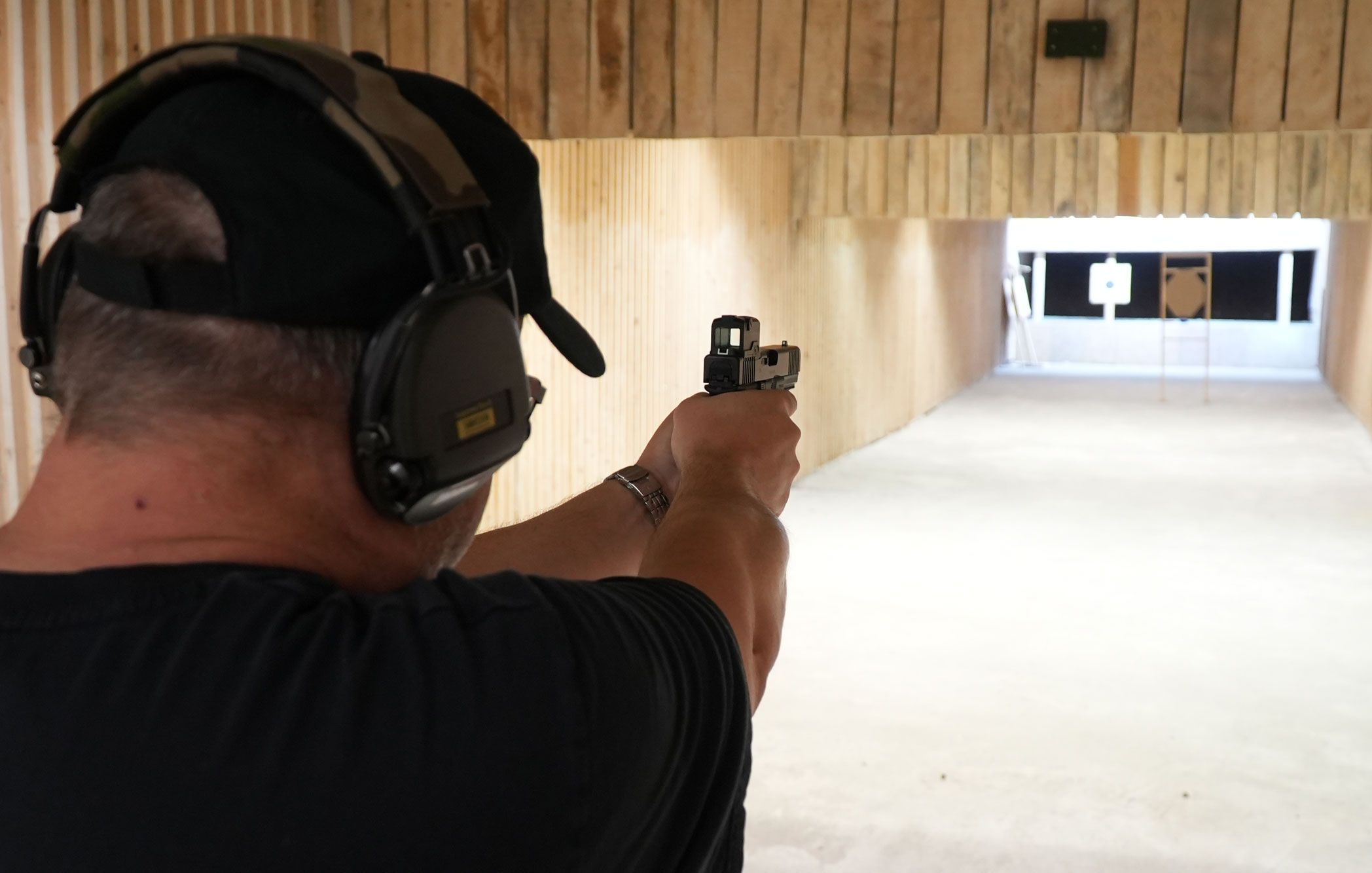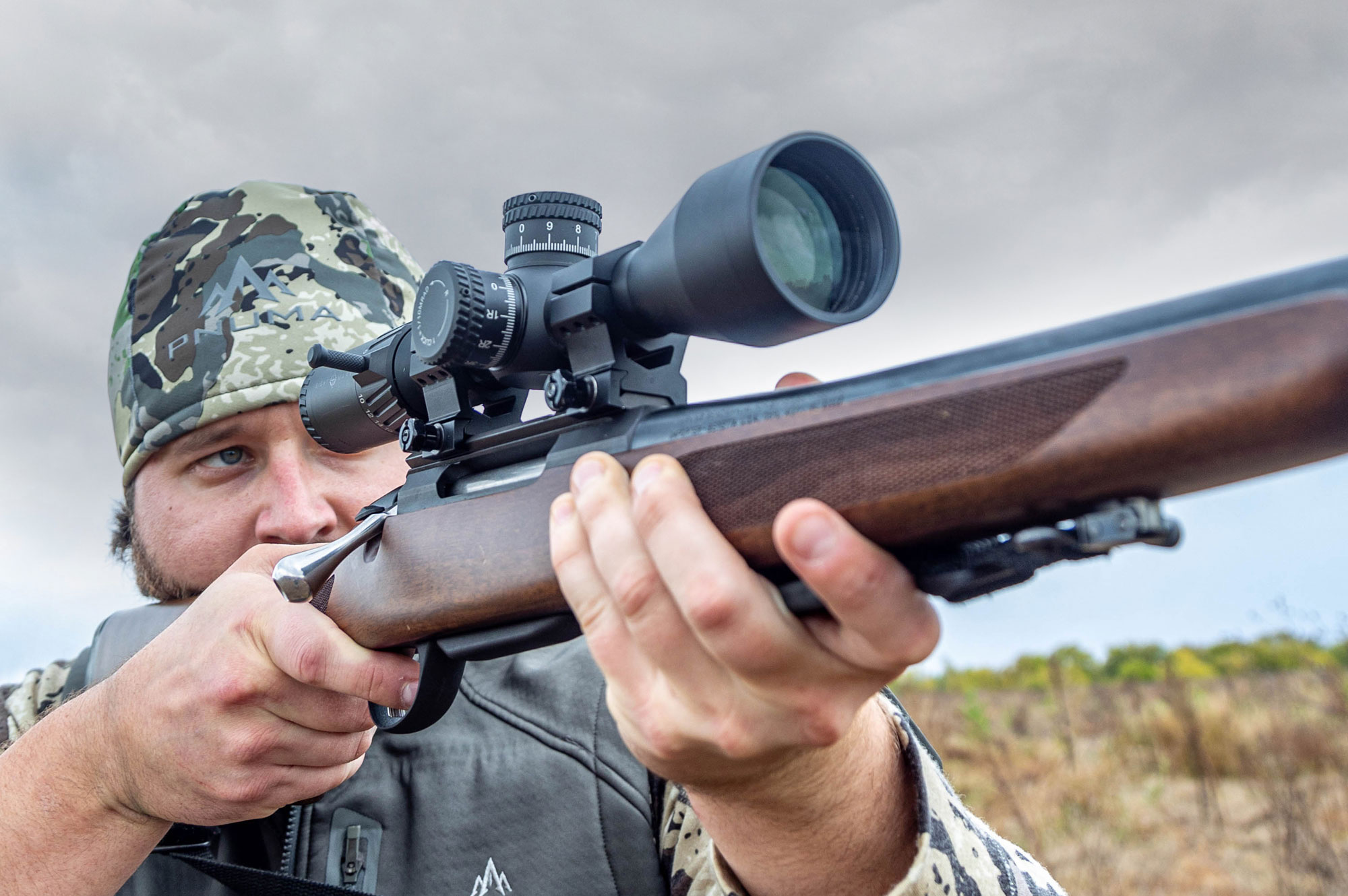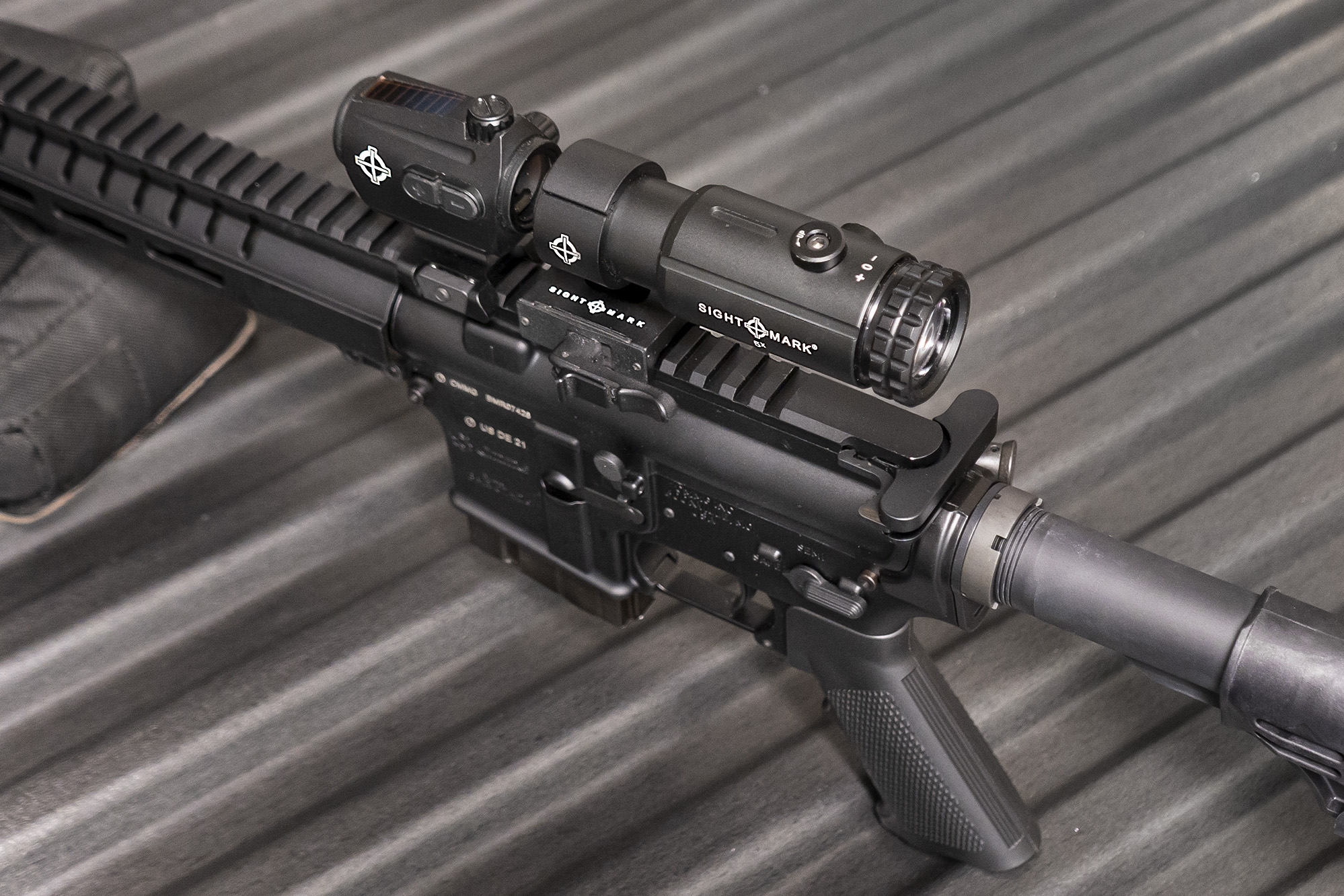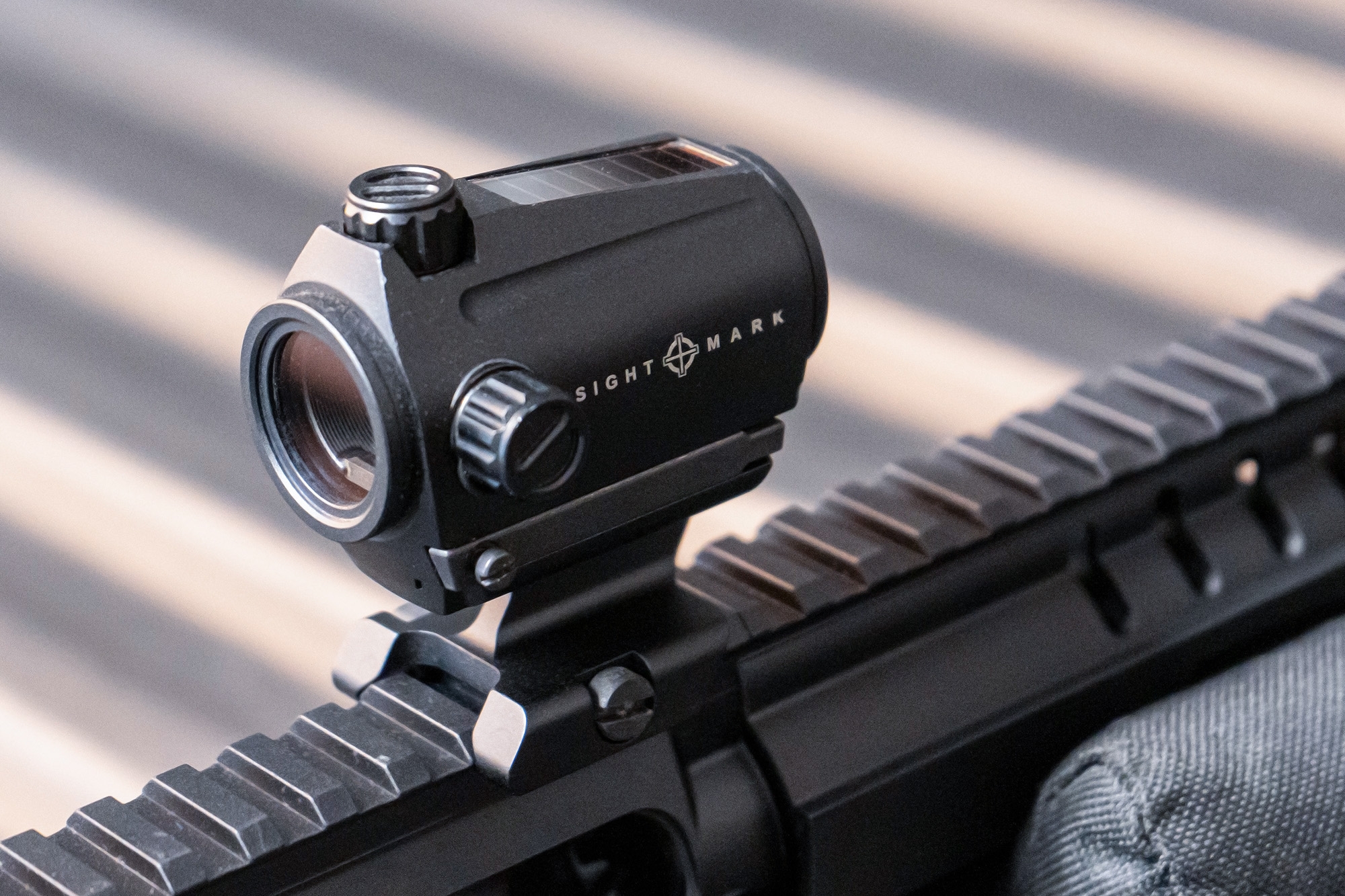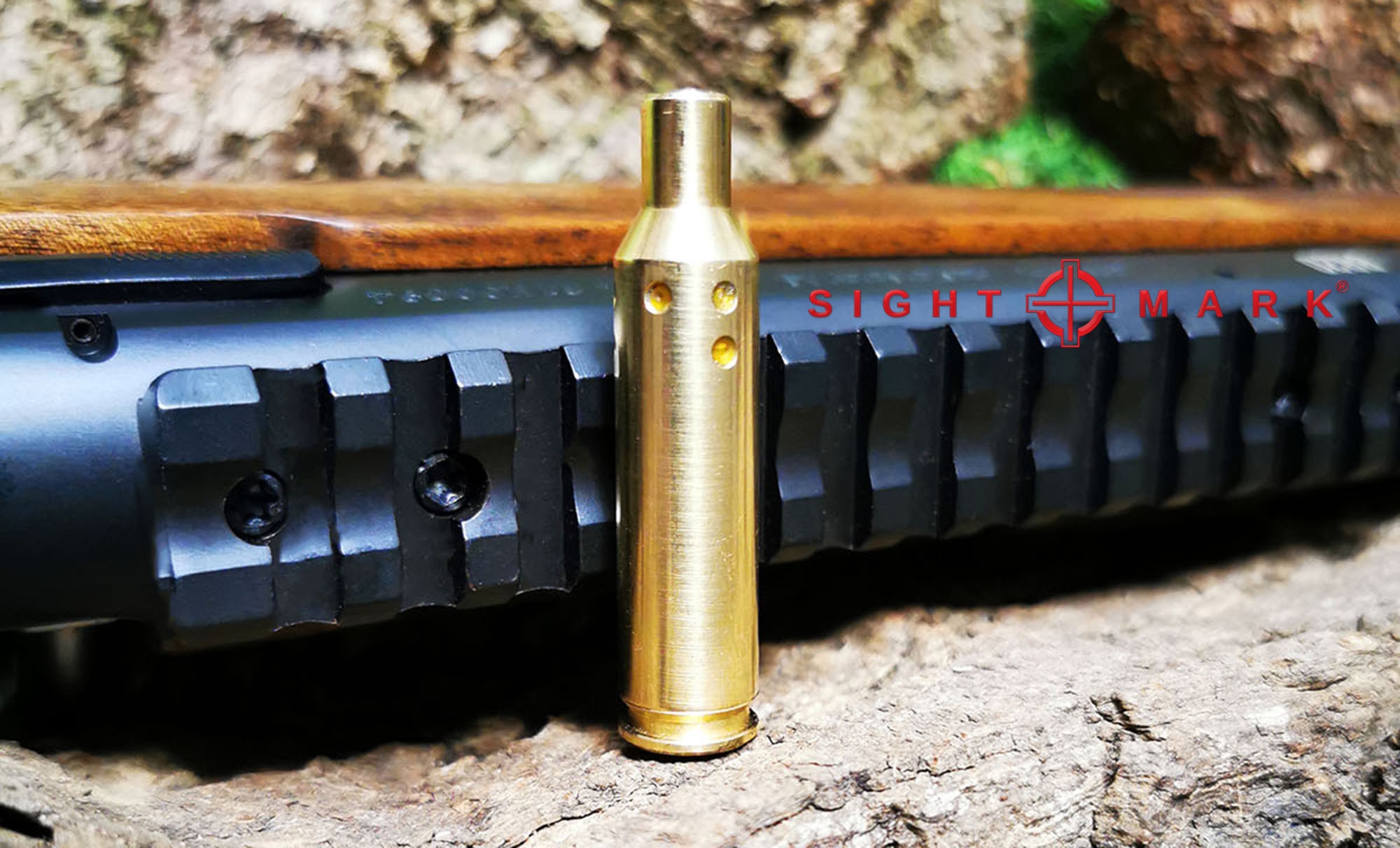Sightmark, headquarted in the USA, is one of the comparatively young companies in the optics sector. Since 2007, the brand has been standing for optics characterized by their particularly good price/performance ratio. By the way, the European headquarters is located in Sofia,Bulgaria, so that short distances to the target markets in Europe are guaranteed. "We don't shy away from comparison at Sightmark - even with more expensive models," Greg Sharpe, the CEO in Sofia, told us. "But please don't compare us directly to premium optics from Swarovski or Kahles, because that's a completely different price segment." With that, the parameters for our test are clear: Sightmark stands for good mid-range optics products at very reasonable prices.
Currently, the US company offers a wide range of optics for hunting, sports, defense, military and LE use under the Sightmark brand. From reflex sights and riflescopes to spotting scopes and night vision optics, everything is available.
The riflescope we tested, with the abbreviation PRS, belongs to Sightmark's "Latitude" series. "PRS" stands for Precision Rifle Series: this type of shooting competition originated in the USA, where very small targets are shot at under time pressure at different distances. The distances are between 10 and 1,200 yards (1,100 m approx.) and the shooter does not always know the distance to the targets in advance.
The sporting Sightmark Latitude series includes a total of five competition models. The 6.5-25x56 PRS model is the smallest and, at $839.99 (well under 900 euros), the lowest-priced Latitude version.
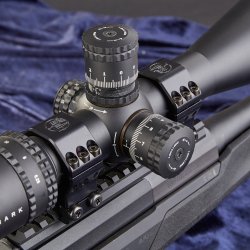
The features of the Latitude PRS also take into account the high requirements of these long-range competitions: a special reticle that can be illuminated either in green or red, adjustment in 0.1 milliradian steps, zero stop elevation dial so that the individual riflescope zero position can be found again at the first attempt. A parallax compensation of 20 yards (18.28 m) to infinity is of course also on board. Sightmark itself claims the optic to be waterproof to IP67 standards (1 meter depth for 1 hour) and recoil proof up to .50 BMG caliber. An aluminum sunshade is included with the scope. One of the special features of the Sightmark Latitude PRS is the diopter compensation that can be firmly adjusted using a screw ring. As far as the workmanship is concerned, the Sightmark left a good impression. Externally, uniformly anodized in matte black and with neatly applied lettering, the look is high quality. This is also contributed to by the mostly double-line, non-slip patterned adjustment rings on the eyepiece and center turret. When adjusting the eyepiece, everything clicks into place and is clearly audible, with the exception of the continuous adjustments for magnification, parallax and diopter compensation.
The Sightmark Latitude PRS has a reticle on the 1st image plane
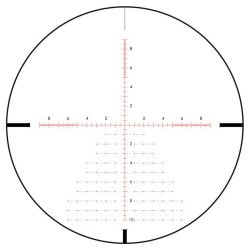
Normally, Sightmark relies on a reticle in the second image plane for the Latitude competition riflescopes with the model designation "Benchrest" or "F-Class". With the PRS model, this is exceptionally not the case: the reticle here sits in the first image plane. This means that the reticle magnifies with the change of magnification and the estimation of distances using the reticle markings works at all magnification levels. Due to the design, changes in magnification with a reticle in the first image plane can't affect the hit placement.
All the little bars, strokes, marks and numbers of the PRS reticle (see illustration) can only be seen well from about 12x magnification. For eye-friendly usability, it would be better to set it to at least 15x magnification so that you can really get a good look at the little helpers on the reticle. So if you don't really want to use the scope for quick sizing and aiming like you do in Precision Rifle Series style competitions, you're probably better off with the clearer crosshairs of the Latitude Benchrest or one of the F-Class models.
On the range, the Sightmark Latitude 6.5-25x56 PRS shows its full capabilities
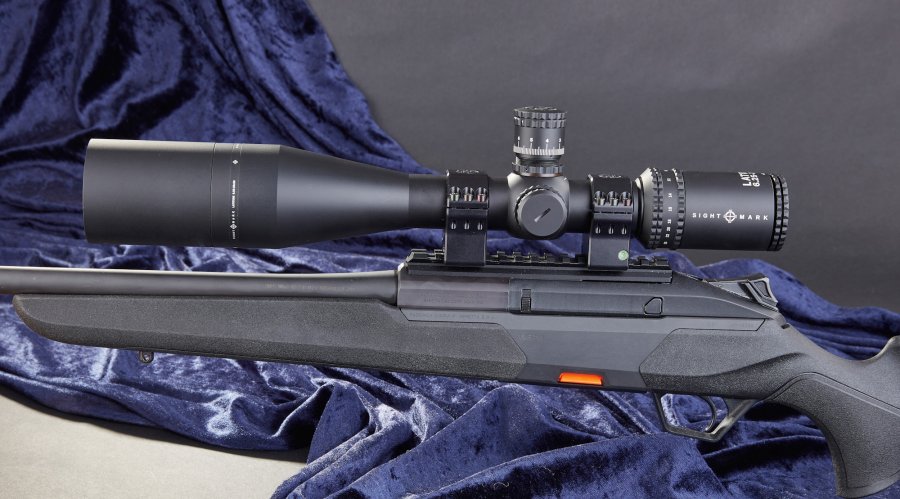
We took the opportunity to mount the Latitude PRS on several rifles. We used bolt action rifles from Beretta, Bergara and Strasser in .308 Winchester and .30-06 Springfield calibers, as well as a handy 10/22 rifle from Ruger. What did we like, and where was the scope less convincing? First of all, the test sample scored points in terms of image quality: even in hazy daylight, everything appeared true to color and pleasantly sharp right to the edges.
Overall, the image on the open shooting range in daylight appeared to be completely okay and not just "okay for the price". Not quite as convincing was the eyebox, which is somewhat sensitive for a scope of this magnification range, i.e. the area in height and side where you get a complete target image behind the eyepiece without black edges.
The PRS reticle, with all its labeling and holding markings, is used to quickly estimate and compensate for varying distances and wind conditions. Fortunately, however, the crosshairs in the center of the PRS reticle are kept fine enough for competition for fine hit images.
The reticle illumination clearly clicks between the zero position and each of the five brightness levels in red or green. On the PRS Latitude, a CR2032 battery illuminates the entire reticle brightly enough for daytime use. The Sightmark Latitude passed the so-called box test without any problems: In this test, a square is shot using the elevation and windage adjustments with always the same number of click stops. If the last group of shots does not land in the first group, something is wrong with the mechanics of the reticle – or the optics are not recoil-proof overall. Here, on the other hand, everything fit perfectly!
Sightmark Latitude 6.5-25x56 PRS specs and price
| Model: | Sightmark Latitude PRS |
| Price: | $839.99
(in the US) / around 890 euro in EU (price may be different in your country) |
| Magnification: | 6.25-25x56 |
| Overall
Length: | 14”/358
mm |
| Main
Tube: | 34 mm |
| Reticle: | PRS, 1st
image plane |
| Click
Adjustment Value: | Milliradian, 0.1 MRAD per click |
| Elevation Adjustment Range: | 31 MRAD, with Zero Stop elevation dial |
| Windage Adjustment Range: | 20 MRAD |
| Parallax Adjustment: | 20 yd
(18.28 m) to infinity |
| Weight: | 35.8
oz/1,015 g |
Our test conclusion: how did the Latitude PRS perform in practice?
Given its good features and solid optical qualities, the Sightmark Latitude PRS appears to be a strong competitor for long-range scopes in the mid-priced market segment. That's exactly what this model is intended for, and for that it is excellently suited and a good choice. So if you're looking for a match scope for PRS, you'll find at a very good deal here. However, for those who might not like the rather special PRS reticle, there are other interesting riflescopes within the Latitude series from Sightmark with more clearly arranged competition reticles. So there should be something for everyone here. What all models have in common is their very good price/performance ratio with good optical performance, for which you otherwise pay significantly more money. Mission accomplished.
For more info please visit the Sightmark website.



